Today Current Affairs: 25th August 2021 for UPSC IAS exams, State PSC exams, SSC CGL, State SSC, RRB, Railways, Banking Exam & IBPS, etc
Table of Contents
National Monetisation Pipeline
The Union Finance Minister has launched the National Monetization Pipeline for the brownfield infrastructure assets.
- The NMP comprises a four-year pipeline of the Central Government’s brownfield infrastructure assets.
- Brownfield infrastructure is any previously developed asset that is not currently in use that may be potentially contaminated.
- The term is also used to describe land previously used for industrial or commercial purposes with known or suspected pollution including soil contamination due to hazardous waste.
- It will serve as a medium-term roadmap for the Asset Monetization initiative of the government, apart from providing visibility for the investors.
- Asset Monetization involves creation of new sources of revenue by unlocking of value of unutilized or underutilized public assets.
- Incidentally, the 2021-22 Union Budget, laid a lot of emphasis on Asset Monetization as a means to raise innovative and alternative financing for infrastructure.
- It has to be noted that the government views asset monetization as a strategy for the augmentation and maintenance of infrastructure, and not just a funding mechanism.
Objective of the programme:
- It estimates total monetization potential of Rs 6 lakh crores through core assets of the Central Government, over a four-year period, from FY 2022 to FY 2025.
- To unlock the value of investments in brownfield public sector assets by tapping institutional and long-term capital, which can thereafter be leveraged for public investments.
- To enable ‘Infrastructure Creation through Monetisation’ wherein the public and private sector collaborate, each excelling in their core areas of competence, so as to deliver socio-economic growth.
New Portal Under Bhuvan “Yuktdhara”:
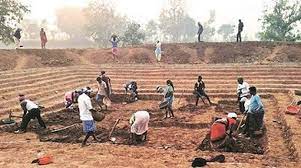
Union Minister Jitendra Singh said that the new portal under Bhuvan “Yuktdhara”, which has been released recently, will facilitate planning of new MGNREGA assets using Remote Sensing and GIS based information.
- The “Yuktdhara” Geospatial Planning Portal will serve as a repository of assets (Geotags) created under various national rural development programmes i.e. MGNREGA, Integrated Watershed Management Programme, Per Drop More Crop and Rashtriya Krishi Vikas Yojana etc., along with field photographs.
- This portal integrates wide variety of thematic layers, multi-temporal high resolution earth observation data with analysis tools.
- Planners will analyse previous assets under various schemes and facilitates identification of new works using online tools. Plans prepared will be evaluated by appropriate authorities under State Departments.
- Thus, Yuktdhara based plans will be prepared by grassroot functionary and verified by appropriate authorities for relevance and resource allocation.
- This would ensure quality of plan and enable a long term monitoring of the assets created over the years.
Corbett Tiger Reserve: Uttarakhand:
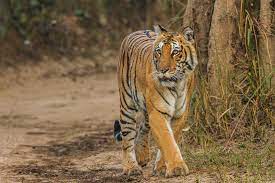
The Delhi High Court has asked the National Tiger Conservation Authority (NTCA) to consider as representation a petition to stop the alleged illegal construction of bridges and walls within tiger breeding habitat of the Corbett Tiger Reserve.
- It is located in Nainital district of Uttarakhand. The Project Tiger was launched in 1973 in Corbett National Park (first National Park of India), which is part of Corbett Tiger Reserve.
- The national park was established in 1936 as Hailey National Park to protect the endangered Bengal tiger.
- It is named after Jim Corbett who played a key role in its establishment.
- The core area forms the Corbett National Park while the buffer contains reserve forests as well as the Sonanadi Wildlife Sanctuary.
- The entire area of the reserve is mountainous and falls in the Shivalik and Outer Himalaya geological provinces.
- Ramganga, Sonanadi, Mandal, Palain and Kosi are the major rivers flowing through the Reserve.
Flora:
- According to the botanical survey of India, Corbett has 600 species of plants – trees, shrubs, ferns, grass, climbers, herbs and bamboos. Sal, Khair and Sissoo are the most visible trees found in Corbett.
Fauna:
- Apart from tigers, Corbett also has leopards. Other mammals such as jungle cats, barking deer, spotted deer, sambar deer, sloth etc. are also found there.
About National Tiger Conservation Authority:
- It is a statutory body under the Ministry of Environment, Forests and Climate Change.
- It was established in 2005 following the recommendations of the Tiger Task Force.
- It was constituted under enabling provisions of the Wildlife (Protection) Act, 1972, as amended in 2006, for strengthening tiger conservation, as per powers and functions assigned to it.
Earthquake Observatories:
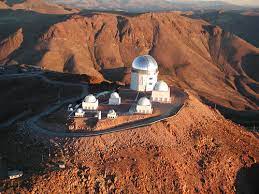
The government has announced that India is going to have 35 more earthquake observatories by the end of the 2021 and aims to add 100 more earthquake observatories by 2026.
- The announcement came at the inaugural function of the Joint Scientific Assembly of the International Association of Geomagnetism and Aeronomy (IAGA) – International Association of Seismology and Physics of the Earth Interior (IASPEI).
About Earthquake Observatories:
- National Center for Seismology (under the Ministry of Earth Sciences) is the nodal agency of the Government of India for monitoring of earthquake activity in the country.
- Currently, India has only 115 earthquake observatories.
- The most important aspect of the Earthquake Observatory is to be able to accurately predict the time of the earthquake.
Need for Earthquake Observatories:
- The occurrence of an earthquake is a natural process, beyond human power. Hence, prevention is the only way.
- Further, the Indian subcontinent is considered as one of the world’s most disaster-prone areas in terms of earthquakes, landslides, floods, cyclones, and tsunamis.
About IAGA and IASPEI:
- International Association of Geomagnetism and Aeronomy (IAGA) welcomes scientists to join in research of magnetism and aeronomy of the Earth, of other bodies of the solar system, and of the interplanetary medium and its interaction with these bodies.
- International Association of Seismology and Physics of the Earth Interior (IASPEI) promotes the study of earthquakes and other seismic sources, the propagation of seismic waves, and the Earth’s internal structure, properties, and processes.
- These are semi-autonomous associations under the International Union of Geodesy and Geophysics (IUGG)
Adoption (First Amendment) Regulations, 2021:

According to a new clause in the adoption regulations, Indian diplomatic missions abroad will now be in charge of safeguarding adopted children whose parents move overseas with the child within two years of adoption.
- So far, Indian missions have had a role in inter-country adoption of Indian children limited to kids adopted by Non Resident Indians (NRIs), Overseas Citizens of India or foreign parents.
Adoption (First Amendment) Regulations, 2021:
- It amends the Adoption Regulations, 2017.
- The amendment has been notified in accordance with the relevant sections of the Juvenile Justice (Care and Protection of Children) Act, 2015 (2 of 2016) and it amends Adoption Regulations, 2017.
- Recently passed Juvenile Justice (Care and Protection of Children) Amendment Act, 2021, seeks to strengthen and streamline the provisions for protection and adoption of children.
- It provides that instead of the court, the District Magistrate (including Additional District Magistrate) will issue such adoption orders.
- It has been made by the Central Adoption Resource Authority and has been notified by the Woman and Child Development Ministry.
- CARA is a statutory body of the Ministry of Women & Child Development.
- It functions as the nodal body for adoption of Indian children and is mandated to monitor and regulate in-country and inter-country adoptions.
Four-Tier Structure For The Urban Cooperative Banks (UCBs):

A Reserve Bank of India (RBI)-appointed committee has suggested a four-tier structure for the Urban Cooperative Banks (UCBs).
- In June 2020, the Central government approved an Ordinance to bring all urban and multi-state co-operative banks under the direct supervision of the RBI.
- In January 2020, the RBI revised the Supervisory Action Framework (SAF) for UCBs.
Categorisation of UCBs:
Based on the cooperativeness’ of the banks, availability of capital and other factors, UCBs may be categorised into four tiers for regulatory purposes:
- Tier 1 with all unit UCBs and salary earner’s UCBs (irrespective of deposit size) and all other UCBs having deposits up to Rs 100 crore.
- Tier 2 with UCBs of deposits between Rs 100 crore and Rs 1,000 crore.
- Tier 3 with UCBs of deposits between Rs 1,000 crore and Rs 10,000 crore.
- Tier 4 with UCBs of deposits more than Rs 10,000 crore.
- The minimum Capital to Risk-Weighted Assets Ratio (CRAR) for them could vary from 9% to 15% and for Tier-4 UCBs the Basel III prescribed norms.
Umbrella Organisation:
- The committee has proposed setting up an Umbrella Organisation (UO) to oversee co-operative banks and suggested that they should be allowed to open more branches if they meet all regulatory requirements.
- The UO should be financially strong and be well governed by a professional board and senior management, both of which are fit and proper.
Alternative Investment Fund For Export-Oriented Micro, Small And Medium Enterprises (MSMEs):

Finance minister has launched Rs 250 crore worth Alternative Investment Fund for export-oriented micro, small and medium enterprises (MSMEs).
Objective of the fund:
- To Identify Indian enterprises with potential advantages by way of technology, products or processes along with export potential, but which are currently underperforming or unable to tap their latent potential to grow.
- The main purpose is to encourage MSMEs as they are vital to the economy in terms of creating jobs, fostering innovations and reviving the economy.
Type of fund:
- Ubharte sitaare fund is a type of Alternative investment fund.
Key features of the scheme:
- The Fund has been set up by Exim Bank and SIDBI (Small Industries Development Bank of India).
- The fund is a mix of structured support, both financial and advisory services.
- It will also have a Greenshoe Option of Rs 250 crore.
- The Fund covers potential companies, across various sectors such as pharma, auto components, engineering solutions, agriculture, and software etc.
Alternative Investment Fund (AIF):
- Alternative Investment Fund comprises pooled investment funds which invest in venture capital, private equity, hedge funds, managed futures etc.
- In simpler terms, an AIF refers to an investment which differs from conventional investment avenues such as stocks, debt securities, etc.
- AIF does not include funds covered under the SEBI (Mutual Funds) Regulations, 1996, SEBI (Collective Investment Schemes) Regulations, 1999 or any other regulations of the Board to regulate fund management activities.
- Nonetheless, the alternative investment funds have to register with SEBI.
Indira Point:
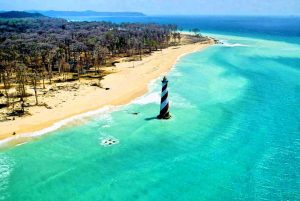
The Swarnim Vijay Varsh Victory Flame was taken to Indira Point, the southernmost tip of the country on August 22, 2021, as part of its voyage to the Nicobar Group of Islands. 2021 is being celebrated as Swarnim Vijay Varsh to mark the 50th year of India’s historic victory in the 1971 war.
Swarnim Vijay Varsh is being celebrated across the nation on the occasion of 50th anniversary of Indo-Pak war in 1971. In the series of events Victory Flame of Swarnim Vijay Varsh is being taken across the length and breadth of the country. The flame was lit up by PM Narendra Modi on 16th Dec. last year at National War Memorial in Delhi.
- Indira Point, southernmost point of India’s territory, is a village in the Nicobar district at Great Nicobar Island of Andaman and Nicobar Islands in India.
- It is located in the Great Nicobar tehsil.
- The point was formerly known as Pygmalion Point and Parsons Point.
- This village was named Indira Point after former Prime Minister Indira Gandhi visited the local light house on 19 February 1984.
- The official renaming ceremony happened on 10 October 1985.
- Galathea National Park and Lighthouse are the major attractions here.
Sree Narayana Guru:
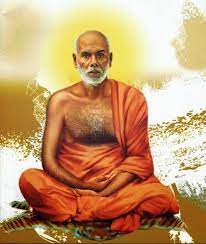
The Prime Minister, Shri Narendra Modi has paid tributes to Sree Narayana Guru on his Jayanti.
- Narayana Guru (1855 – 1928) was a philosopher, spiritual leader and social reformer in India.
- He was born into a family that belonged to the Ezhava caste.
- He led a reform movement against the injustice in the caste-ridden society of Kerala in order to promote spiritual enlightenment and social equality.
- Shri Narayana Dharma Paripalana Yogam (also known as SNDP Yogam) is an Indian spiritual organization that was formally founded by Dr. Padmanabhan Palpu in 1903, with the guidance of Shri Narayana Guru. The main aim of SNDP Yogam was to spiritually uplift the people of the Ezhava/Tiyyar communities.
- Vaikom Satyagraha (1924–25) was a social protest in erstwhile Travancore against untouchability and caste discrimination in Hindu society of Kerala. Sree Narayana Guru involved himself with the Vaikom Satyagraha and extended much co-operation.
- He published 45 works in Malayalam, Sanskrit and Tamil languages which include Atmopadesa Śatakam, a hundred-verse spiritual poem and Daiva Dasakam, a universal prayer in ten verses.
Smog Tower:
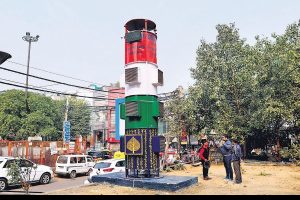
Ahead of its infamous smog season, Delhi got a ‘smog tower’, a technological aid to help combat air pollution.
Components of smog tower
- The structure is 24 m high, about as much as an 8-storey building — an 18-metre concrete tower, topped by a 6-metre-high canopy. At its base are 40 fans, 10 on each side.
- Each fan can discharge 25 cubic metres per second of air, adding up to 1,000 cubic metres per second for the tower as a whole. Inside the tower in two layers are 5,000 filters. The filters and fans have been imported from the United States.
- The tower uses a ‘downdraft air cleaning system’.
- Polluted air is sucked in at a height of 24 m, and filtered air is released at the bottom of the tower, at a height of about 10 m from the ground.
- When the fans at the bottom of the tower operate, the negative pressure created sucks in air from the top. The ‘macro’ layer in the filter traps particles of 10 microns and larger, while the ‘micro’ layer filters smaller particles of around 0.3 microns.
- The downdraft method is different from the system used in China, where a 60-metre smog tower in Xian city uses an ‘updraft’ system — air is sucked in from near the ground, and is propelled upwards by heating and convection. Filtered air is released at the top of the tower.
Krivak Class Stealth Frigates:

The first of two additional Krivak class stealth frigates being built by Russia is expected to be delivered to India in the middle of 2023, Alexey Rakhmanov, chief executive officer of United Shipbuilding Corporation, said.
- In October 2016, India and Russia signed an Inter-Governmental Agreement (IGA) for four Krivak or Talwar class stealth frigates — two to be procured directly from Russia and two to be built by Goa Shipyard Ltd. (GSL) — after which a $1 billion deal was signed for the direct purchase.
- The keel for the first ship to be built at GSL was laid in January and for the second ship in June this year. Keel laying is a major milestone in shipbuilding symbolises the formal commencement of the construction process.
- The Navy currently operates six Krivak class frigates procured in two different batches




